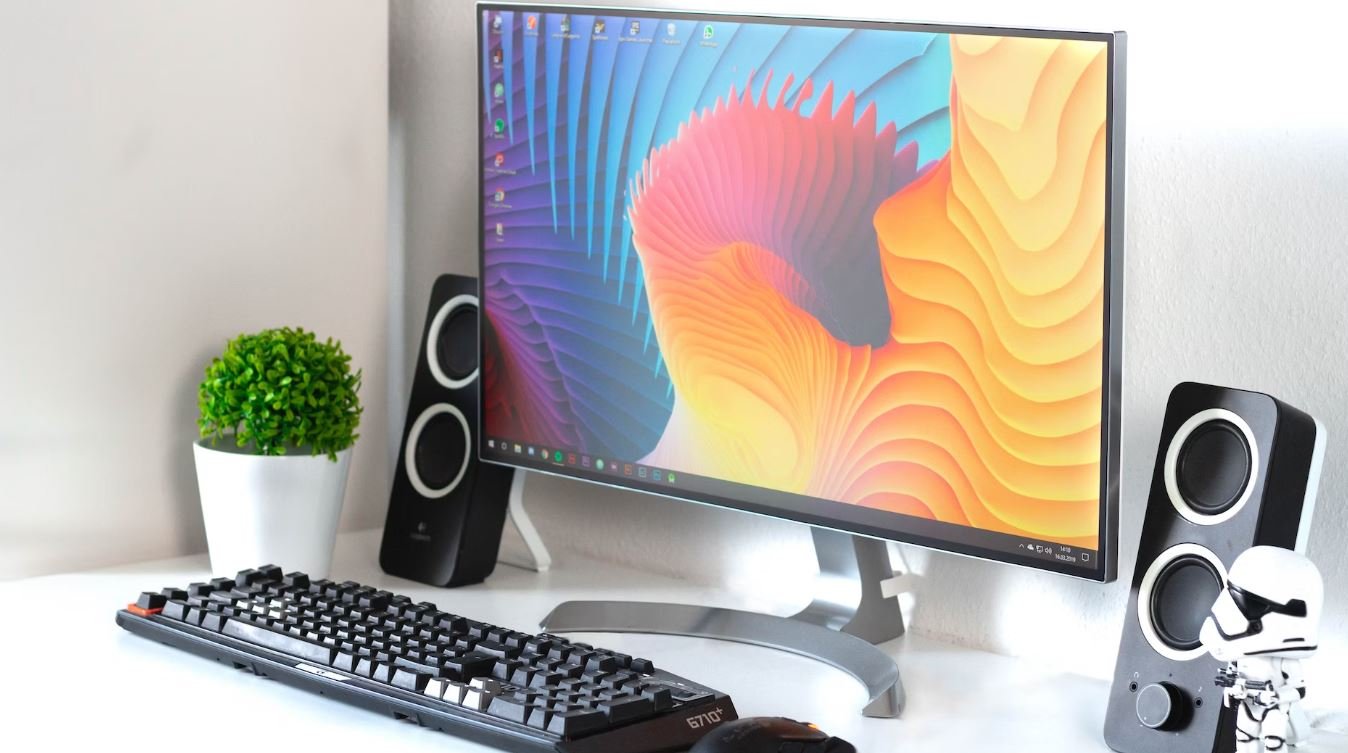Generative Art Python
Generative art is a creative coding technique where algorithms are used to generate artwork. Python is a powerful programming language that can be used to create generative art by leveraging its libraries and functions. In this article, we will explore how to create generative art using Python.
Key Takeaways
- Generative art combines algorithms and creativity.
- Python is a suitable language for creating generative art.
- Python libraries such as Pygame and Matplotlib can be used for generative art.
Generative art is a fascinating blend of algorithmic processes and artistic expression. It allows artists and programmers to use code to generate visual or auditory creations that are both unique and unpredictable. Python’s versatility and extensive libraries make it a great choice for generative art.
One of the key advantages of using Python for generative art is its wide range of libraries and tools. Libraries like Pygame provide a platform for interactive graphics, while Matplotlib offers powerful data visualization capabilities. These libraries simplify the process of creating generative art by providing ready-to-use functions and modules.
When creating generative art with Python, designers have a variety of techniques and approaches at their disposal. They can utilize mathematical functions, random number generation, particle systems, cellular automata, or even neural networks to generate art. The possibilities are endless, allowing artists to experiment and push the boundaries of creativity. Python provides the flexibility to explore different artistic concepts through code.
Generating Art with Python Libraries
Python libraries like Pygame and Matplotlib offer powerful tools for creating generative art. Pygame is primarily used for creating interactive graphical applications, making it ideal for real-time generative art. Matplotlib, on the other hand, focuses on data visualization and can be used to generate static images and plots.
Pygame provides a range of functionalities, including drawing shapes, handling user input, and managing animations. By combining these features, artists can create interactive generative art pieces that respond to user interactions. *With Pygame, the artistic experience becomes a collaborative process between the artist and the audience.
Matplotlib, being a data visualization library, offers a different approach to generative art. Artists can leverage its plotting functions and customization options to create visually appealing static artwork. By manipulating data and incorporating algorithms, artists can generate complex and beautiful visualizations. *Matplotlib bridges the gap between data science and artistic expression.
Exploring Generative Art Techniques
Generative art techniques can be applied using a variety of approaches and algorithms. Here are some interesting techniques commonly used in generative art:
- Fractal Art: Using mathematical equations, artists can generate intricate and infinitely repeating patterns that exhibit self-similarity at various scales.
- Reaction-Diffusion: This technique simulates chemical reactions to create visually captivating patterns that resemble natural phenomena, such as coral reefs or animal coats.
- Genetic Algorithms: By applying principles of natural selection and mutation, artists can evolve their art over time, exploring various aesthetic possibilities.
Let’s take a closer look at some fascinating data points:
| Technique | Description | Example |
|---|---|---|
| Fractal Art | Intricate patterns generated using mathematical equations. | Mandelbrot Set |
| Reaction-Diffusion | Patterns resembling natural phenomena, generated through simulated chemical reactions. | Turing Patterns |
| Genetic Algorithms | Art evolves over time using the principles of natural selection and mutation. | Interactive Evolutionary Art |
As we can see from the examples, generative art techniques provide a vast creative playground, where artists can use algorithms to craft unique and visually stunning pieces. By combining these techniques with Python’s programming capabilities, artists can create art that is truly one-of-a-kind. Generative art pushes the boundaries between science and art, creating an amalgamation of creativity and algorithmic expression.
Conclusion
In conclusion, Python offers a powerful platform for creating generative art. Its extensive libraries, such as Pygame and Matplotlib, provide the necessary tools and functions to bring algorithmic creativity to life. Artists can experiment with various techniques, including fractal art, reaction-diffusion, and genetic algorithms, to generate visually captivating and unique art pieces. With Python, the possibilities for generative art are virtually limitless. Embrace the world of generative art with Python and explore a new dimension of creativity.

Common Misconceptions
Generative Art and Python
There are several common misconceptions that people often have about generative art in relation to Python. It is important to clarify these misconceptions to have a better understanding of how they are both related and distinct.
- Generative art is only possible through complex programming languages.
- Python is limited in its capabilities for creating visually appealing artwork.
- Generative art created in Python lacks creativity and originality.
Complex Programming Languages
One common misconception is that generative art can only be achieved through complex programming languages. While it is true that certain programming languages provide more advanced functionalities for generative art, Python is a powerful language that can also be used effectively in this field.
- Python offers numerous libraries and frameworks that simplify the process of creating generative art.
- With Python, even beginners can create visually stunning and intricate generative artwork.
- Python’s accessibility and ease of use make it an ideal choice for both beginners and experienced programmers interested in generative art.
Python’s Capabilities for Artwork
Another misconception is that Python is limited in its capabilities for creating visually appealing artwork. While Python may have some limitations compared to more specialized software or languages, it is still highly versatile for generative art creation.
- Python has a wide range of libraries and packages specifically designed for generating visually stunning art.
- Python’s integration with other tools and libraries allows for the creation of complex and interactive generative art pieces.
- Python’s flexibility enables artists to combine various techniques, such as algorithms and data visualization, to create unique and compelling generative art.
Creativity and Originality in Python
Many mistakenly believe that generative art created in Python lacks creativity and originality. However, this misconception overlooks the fact that the artist’s creativity and vision play a significant role in the final artwork, regardless of the programming language used.
- Python provides a platform for artists to express their creativity and experiment with different generative art ideas.
- Python’s ability to handle complex mathematical and computational processes allows artists to explore innovative generative art techniques.
- Generative art created in Python can be highly original and unique, as it is ultimately guided by the artist’s intentions and choices.

Introduction
Generative art is an artistic discipline that utilizes algorithms to produce unique and dynamic artworks. It combines the creativity of artists with the computational power of machines to generate aesthetically pleasing visual representations. Python, a versatile programming language, is commonly used to create generative art due to its flexibility and extensive libraries. This article explores various captivating aspects of generative art in Python through the following illustrative tables.
Table 1: Famous Generative Art Installations
Below are some renowned generative art installations that have captivated audiences worldwide due to their immersive and interactive nature:
| Installation Name | Location | Year |
|---|---|---|
| The Rain Room | London, UK | 2012 |
| Wave Interference | Tokyo, Japan | 2016 |
| TeamLab Borderless | Tokyo, Japan | 2018 |
Table 2: Popular Libraries for Generative Art in Python
Python provides several libraries that offer tools and functionalities specifically designed for generative art creation. The following table showcases some of these libraries:
| Library Name | Description |
|---|---|
| Processing.py | A Python port of the popular Processing language, simplifying the creation of interactive generative artworks. |
| Pycairo | A powerful 2D graphics library that enables precise and high-quality visual rendering in generative art. |
| fractals | A library dedicated to generating various fractal patterns and structures through recursive algorithms. |
Table 3: Examples of Generative Art Techniques
Generative art encompasses a wide range of techniques, each producing distinctive artistic outcomes. Here are some commonly employed techniques:
| Technique | Description |
|---|---|
| Cellular Automata | A grid-based technique where cells evolve based on their neighboring cells’ states, creating dynamic patterns. |
| Particle Systems | An approach that simulates the behavior of individual particles, generating complex and lifelike visual effects. |
| Delaunay Triangulation | A method that connects points into a mesh of triangles, producing intricate geometric patterns. |
Table 4: Artists Utilizing Generative Art
Many contemporary artists embrace generative art as a means of expression. The following table highlights a few notable artists incorporating generative techniques into their works:
| Artist | Nationality | Notable Works |
|---|---|---|
| Manfred Mohr | German | P-194_1973, Cubic Limit Intervals, Cubic Limit Color Space |
| Vera Molnar | Hungarian | Machine Imaginings, Réptil, Triolets |
| Camille Utterback | American | Text Rain, Untitled 5, Liquid Time |
Table 5: Color Palettes for Generative Artwork
The selection of color palettes greatly influences the aesthetics of generative artwork. The following table showcases various appealing color palettes:
| Palette Name | RGB Codes |
|---|---|
| Ocean Breeze | #61A0AF, #328C9E, #2A6674 |
| Golden Harvest | #FFAD00, #D67800, #775500 |
| Lush Meadows | #6ECB82, #488E49, #254822 |
Table 6: Aesthetic Principles in Generative Art
Generative art follows various aesthetic principles to create visually engaging and harmonious compositions. The table below outlines some of these principles:
| Principle | Description |
|---|---|
| Symmetry | Artworks that exhibit balance and symmetry, evoking a sense of harmony and order. |
| Emergence | Complex patterns and structures that emerge from simple rules and interactions. |
| Contrast | The juxtaposition of elements with distinct characteristics to create visual impact. |
Table 7: Influential Books on Generative Art
Books serve as a valuable resource for exploring the concepts, techniques, and history of generative art. Here are some influential books in this field:
| Book Title | Author | Publication Year |
|---|---|---|
| Generative Design | Hartmut Bohnacker et al. | 2012 |
| Complexity: A Guided Tour | Melanie Mitchell | 2009 |
| Form+Code in Design, Art, and Architecture | Casey Reas et al. | 2010 |
Table 8: Tools for Creating Generative Art
A range of software tools and frameworks exist to aid in the creation of generative art. The following table highlights some popular tools:
| Tool | Description |
|---|---|
| Processing | An open-source programming language and environment that simplifies generative art creation. |
| OpenFrameworks | A C++ toolkit widely used for creative coding and generative art development. |
| p5.js | A JavaScript library that facilitates artistic expression through generative techniques. |
Table 9: Generative Art Exhibitions
Generative art exhibitions provide platforms for artists to showcase their innovative creations. The table below features notable exhibitions in this realm:
| Exhibition Name | Location | Year |
|---|---|---|
| Artificial Intelligence and More | Nagoya City Art Museum, Japan | 2021 |
| The Art of Code | Museum of Applied Arts and Sciences, Sydney, Australia | 2019 |
| Generative Art International Exhibition | Palazzo Fruscione, Salerno, Italy | 2020 |
Conclusion
The captivating world of generative art in Python offers endless possibilities for artistic exploration. From famous installations and influential artists to libraries, techniques, and exhibitions, the tables presented here provide valuable insight into this evolving field. Emerging at the intersection of art and technology, generative art continues to push the boundaries of creativity, revolutionizing the way we perceive and engage with art. By leveraging the power of Python and its robust ecosystem, artists can unlock their imagination and embark on exciting generative art ventures.
Frequently Asked Questions
What is generative art?
Generative art refers to artwork created using algorithms or systems that produce unique, non-repetitive designs. It combines the principles of art and programming to create visually appealing or thought-provoking creations.
How can Python be used to create generative art?
Python, being a versatile programming language, provides various libraries and tools that facilitate the creation of generative art. Libraries like NumPy, Matplotlib, and OpenCV offer functionality for generating patterns, manipulating images, and creating complex algorithms.
What are some popular Python libraries for generative art?
Some popular Python libraries for generative art include Processing.py, Turtle, Cairo, and Pygame. These libraries provide different functionalities, such as drawing shapes, rendering graphics, or creating interactive environments.
Is programming experience necessary to create generative art with Python?
While some programming experience can be helpful, it is not strictly necessary to create generative art with Python. There are beginner-friendly libraries and tutorials available that provide step-by-step guidance for creating generative art without extensive programming knowledge.
Can generative art created with Python be exported to different file formats?
Yes, generative art created with Python can be exported to various file formats, such as PNG, JPEG, SVG, or even GIF. Python libraries like PIL (Python Imaging Library) or Matplotlib provide functionality for saving images in different formats.
Are there any online communities or forums dedicated to generative art with Python?
Yes, there are online communities and forums where artists and developers interested in generative art using Python can connect, share their work, ask questions, and collaborate. Some popular ones include r/generative, OpenProcessing, or the Generative Art Reddit community.
Can generative art created with Python be animated?
Yes, generative art created with Python can be animated. By employing libraries like Pygame or Processing.py, developers can create interactive visual experiences or animations that respond to user input or follow pre-defined rules.
Is generative art created with Python limited to 2D designs only?
No, generative art created with Python is not limited to 2D designs only. With the help of libraries like Blender, PyOpenGL, or Three.js, developers can create generative art in 3D, exploring volumetric forms, virtual environments, or even simulations.
Are there any tutorials or resources available for learning generative art with Python?
Yes, there are numerous tutorials, blogs, and online resources available for learning generative art with Python. Websites like Creative Coding or OpenProcessing often feature tutorials and code examples, while books like “Generative Art” by Matt Pearson provide in-depth guidance.
What are some real-world applications of generative art created with Python?
Generative art created with Python finds applications in various fields, such as visual arts, graphic design, data visualization, and even marketing. It can be used to generate unique logos, patterns, or visual representations of complex datasets by leveraging the power of algorithms and automation.




